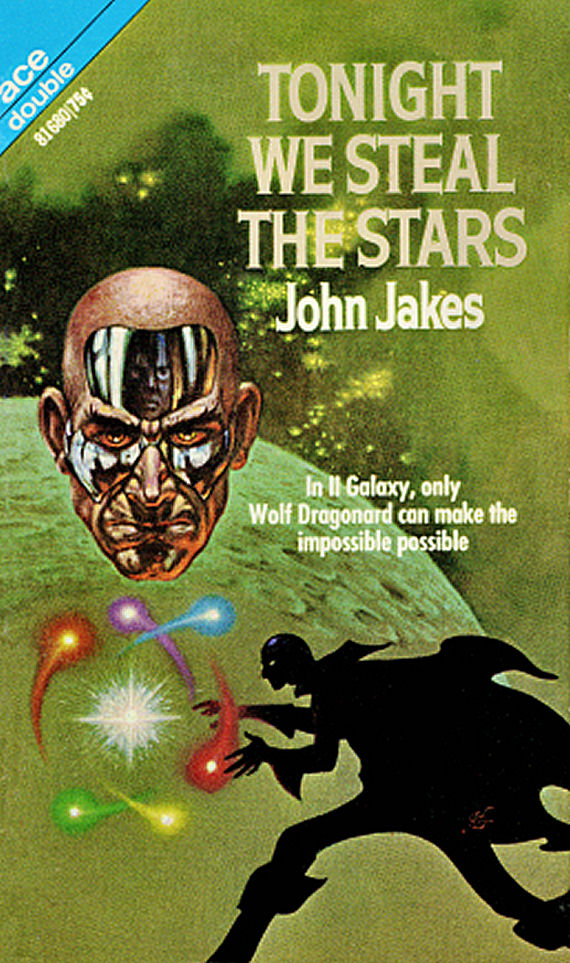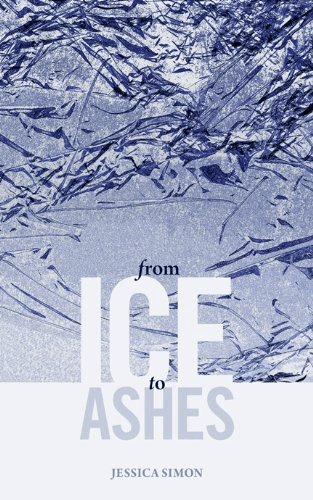
Thanks to NaNoWriMo, I’m still rerunning updated old columns for the next couple of weeks. I hope these are new to at least some of you; if not, feel free to skip it, although I do make changes before I republish. My NaNo writing has taken a whole new turn this week and, if I’m successful at what I’m trying to do, I’ll let you know next Friday!
In a previous column (2014), I asked whether the artists not being credited at Avon Fantasy Reader — edited by Donald A. Wollheim (Figure 1) — was Avon’s policy or the editor’s; thanks to Donald A. Wollheim’s daughter, Betsy — who is President and Publisher at DAW Books — I now know the answer. The policy was Avon’s; although some specialty publishers credited their cover and interior artists, Avon didn’t feel it was necessary.
Donald A. Wollheim, who founded Ace’s paperback line (Ace Publishing was only a magazine company when he left Avon and went to work for A.A. Wyn at Ace) — especially the Ace Double line I’ve been talking about — was a major figure in publishing SF/F from the ‘40s until the ‘90s. Although Ace didn’t credit its artists for the D-series (the book’s numbering: all were in the format D-nnn, where nnn was a three-digit number), all series thereafter did so. And when he left Ace, after twenty years, to found DAW Books (Donald A. Wollheim, get it?), he continued the practice. There were 75 books in the D series; 150 titles in all. After the D series, Ace published the F, G, H, M and numbered series. The Doubles as a whole were published from 1953 to 1983, which is quite a track record. After the D series, all Ace Doubles credited not only the cover artists, but the frontispiece artists for each side. (Remember that the Ace Doubles were two books bound head-to-toe in the so-called tête-bêche (literally head-to-tail) format — meaning that if you flip the book vertically, you’ll see a different book — each with a separate cover and, usually, artist and author. The books were limited to more or less novella length.) During Wollheim’s tenure at Ace and, after him, Ace generally had some terrific cover artists, not only for the doubles, but also for the singles; when Wollheim founded DAW books, he continued to work with those cover artists and to develop new ones, because he felt that crediting the artist was only fair. According to Betsy Wollheim, although Ace had an Art Director, Wollheim usually worked directly with the artists. It is probable that DAW is still the only major mass-market SF/F paperback to continue to give cover credit to the artists.
In this column I won’t attempt to show every cover cited; I will show representative covers, in most cases, of the artists I talk about. As usual, I’m only giving an overview; there are numerous books and internet sites — and articles, like on Wikipedia — for the interested reader to find. And sometimes, the artist’s information just can’t be found: consider Figure 2 which, due to the limitations of the size and offset process (probably 4-colour; it was relatively cheap), appeared to have some of the smooth airbrush of Alex Schomburg (left); on closer examination, thanks to a scan of the original which I found online (right), there were obvious brush strokes instead of airbrush, and the spaceship didn’t appear to be as smooth and competent as Alex’s. The artist for this cover is unknown; a lengthy search didn’t turn up his name.

Although many of Ace’s cover artists did multiple covers, there were a few who only did a single cover or at most three or four; some examples are Vaughn Bodé (creator of Cheech Wizard and Belinda Bump) and Alex Schomburg. The artists who did the first few Ace Double covers, Stanley Meltzoff, Robert Schultz and Norman Saunders, were supplanted shortly after Ed Valigursky came on board (Schultz painted a lot of “men’s magazine” covers; Meltzoff did a lot of magazine and paperback covers in the ‘50s and became renowned as a “fish” painter in the ‘60s and later. Saunders was also a pulp artist who later gained notoriety for painting the “Mars Attacks” bubblegum cards. Their sagas might call for separate columns later.) After Meltzoff, Saunders and Schultz’s first few covers, the main work for the D-series Ace Doubles fell to Ed Valigursky, although the three continued to do Doubles covers. Ed Emshwiller (who signed his pictures “EMSH”) began working for Ace in 1956.

It was Emsh who started my lifelong fascination with SF art; one of the things he did which fascinated me as a pre-teen, was to hide his EMSH signature in the covers. From the first Emsh cover I saw at my friend Jimmy Griffin’s house — in Florida at the beginning of the 1960s — until Emshwiller finally left the SF art field to go into video, I simply had to find the hidden EMSH. Valigursky didn’t begin signing his art until later; however, the styles of these two artists — and later, artists like Frank Kelly Freas, Jack Gaughan and others — were so distinctive that no signature was usually needed for me to know who’d painted a particular cover. A few years later I got into the “Winston juveniles” (they definitely will be a future column) with their covers by Alex Schomburg and others. SF art was, to me — and still remains — a fabulous glimpse into the pictures that science fiction can create in a reader’s mind; their visions were concrete, as opposed to my own nebulous concepts (remember, I was very young at the time) and so helped shape not only my view of SF, but in some ways my worldview. Since my mother was an artist (“fine” arts; she was mostly a painter, but branched out into metal and glass sculpture in her later years), I was exposed to much of the finest art in the world, but in some ways SF/fantasy art spoke more directly to me than any other kind. In Figure 2, the EMSH is not hidden, by the way, though usually, it was. (It’s near the left foot of the background figure.)
Anyway, Ed Valigursky came in right around D-73 (1954), which was a Donald A. Wollheim (surprise!) anthology titled Adventures in the Far Future. He (Valigursky), Meltzoff, Schultz, Barton and others shared the cover duties until Ed “Emsh” Emshwiller started with with D-193 (1956), Philip K. Dick’s The Man Who Japed. Although Meltzoff, Schultz and the others tried to do what they visualized as science-fictional covers, they were mostly mainstream cover artists and their styles were — to me — not terribly SFnal (science-fictional), or only SFnal in a sort of vague and offhand way.

When Ed Valigursky came on board, he brought an ability to do covers that were more obviously SFnal; his ability to paint more “realistic-looking” (although nobody had ever seen these things for real) spaceships, futuristic/scientific equipment, and robots — with metallic parts that gleamed — see the metal parts and robotic tentacles in Figure 4 for an example. In many ways, though, Valigursky’s covers had a sort of “static” feel for the most part; when Emsh joined up, he brought action-oriented SFnal covers, with explosions, people running, screaming and so on (Figure 3 is an exception, a “static” Emsh). Both artists were impeccable draftsmen, however, and Emsh and Valigursky would share cover duties for the next several years — with the occasional odd cover by someone else — until, in 1961, they were joined by John Schoenherr with the John Brunner book D-507, Meeting At Infinity. All together, Valigursky did 80 Ace Double covers; Emsh did about the same number.
(I don’t have much of an art collection myself, never having had a lot of funds to invest in that sort of thing — but I do have one Emsh original; that one is a b/w scratchboard drawing from Keith Laumer’s original If magazine publication of Plague of Demons (November, 1964). I prize it very highly.)
John Schoenherr, as some of you may know, became very well known with the Analog publication of Frank Herbert’s Dune; in fact, his visualization of the sandworms, following Herbert’s description, has probably influenced all the Dune movies, starting with David Lynch’s Dune in 1984. Schoenherr’s looser, but more stylized, covers were just as SFnal as Emsh’s and Valigursky’s, but in some indefinable way brought a feeling of immensity to his buildings and spaceships.

You can tell in Figure 5 that this Venus cover shares, more or less, a colour palette with the Dune covers, and that the book by David Grinnell (a Donald Wollheim pseudonym) was written after the Mariner mission had told us that Venus wasn’t the swampy jungle planet we’d envisioned for years. After his appearance with the Brunner book, Schoenherr shared cover duty with Valigursky and Emsh, although the majority of covers were done by either Valigursky and Emsh until the D-series was finished. Schoenherr did about 15 covers for Ace Doubles. Again, there was the occasional cover by someone like Basil Gogos, whose cover for D-471, John Brunner’s Sanctuary in the Sky, hearkened back to the pulps — with a jodhpur-clad spaceman clutching a screaming female—and gave no hint of the kind of cover artist he would later become on Forrest J Ackerman’s Famous Monsters of Filmland. Figure 8 shows Gogos’s only Ace Double cover. (Next week I’ll talk about some of the “one-off” artists Wollheim used.)
In 1962, the next artist Wollheim hired was Jack Gaughan, who was to become another mainstay cover artist, not just for Ace, but for books and magazines like F&SF. His first cover was for John Brunner’s Times Without Number, F-161. For the next several years he shared cover credit with Valigursky and Emsh; again, there were occasional single covers by other artists, none terribly noteworthy in my opinion…but then, I’m a little biased towards the major artists. Jack Gaughan was, in my opinion, one of the absolute top artists ever to grace Ace Doubles; his style — though it changed throughout the years — was almost unmistakeable. He kept the SFnal look of Ace, but added an artistic component that elevated his best work above the purely commercial.

He was always changing: at one moment he was doing a “hard SF” piece reminiscent of the kind of thing Valigursky might have done; at the next moment he would throw out a cover that might have been painted by Richard Powers or Leo and Diane Dillon. Figure 6 shows a “Dillon-esque” cover, similar to some of the Ace singles covers that the Dillons have done. He was certainly more versatile and changeable than I think even Donald Wollheim expected. Although as I’ve said, my art collection is small, I own two original Gaughans; one is a one-off piece I bought at the Denver (1981) Worldcon, called “Emunctus, a God for the Godless (God of Eructations)” for $50; the second was willed to me by the late Jon Gustafson, and was a cover for If magazine, I think.) Gaughan did an astonishing 84 Ace Doubles covers, I believe. He also did the majority of frontispiece black-and-white illustrations for the books after he came on board.
In 1966, one of Astounding magazine’s best cover artists joined the stable. With the publication of G-588, John Baxter’s The Off-Worlders, Frank Kelly Freas (usually just called “Kelly Freas” — pronounced a little like “freeze”), a major force since the 1950s in SF art, became an Ace Double cover artist. Kelly was to do a further 68 Ace Doubles covers, with his final cover for them coming in 1973 (#76380; William F. Temple’s The Three Suns of Amara.)

Kelly brought a couple of new things to Ace Double covers; the first being his own artistic sensibility of colour and light — every cover Kelly did for Ace was colourful and luminous. The second thing Kelly brought was his own sense of humour; he was generally a very cheerful guy and often brightened up a cover with a little humourous touch here and there. One thing Kelly told me is that every painting he did had to tell a story; his pictures sometimes clarified a muddy story or novel. Kelly often signed his covers with his own little “bug” — a “KF” monogram in a circle that he’d developed years before while working, I believe, at Astounding for John W. Campbell. (In Figure 7, the bug is barely visible on the cloak of the silhouetted figure. Figure 7 shows Kelly’s incredible colour sense and skill with metallic reflections as well.) (I’m only bragging a bit, when I say that on my office wall, as I type this, I’m being stared at by a portrait of me, painted by Kelly in 1983 at Moscon; said portrait being commissioned by Verna Smith Trestrail, the daughter of Edward E. “Doc” Smith, famous SF novelist (the Skylark of Space and the Lensman series for two) of the ‘30s to the ‘50s, as a “guesting gift” at Moscon. Although by that time, Kelly was signing his paintings “Kelly Freas,” I asked him to please sign this one with the bug, which he did. It’s one of my proudest possessions!)
Each artist mentioned above has brought his own vision and artistic sensibility to the covers of this unique book series; and science fiction has been better for it and them, not to mention for the man who started it all, Donald A. Wollheim. Between (or among) the artists mentioned, they have won just about every award given out in the SF field; most of them numerous times; Kelly Freas has been named “The Dean of SF Artists,” and Jack Gaughan, John Schoenherr (who Jack Gaughan jokingly called “Crazy Jack Schoenherr” in letters to me), Ed Valigursky and Ed Emshwiller are surely not far behind in the pantheon of SF artists. Next week we’ll finish up this little look at a somewhat forgotten and very praiseworthy chapter in the annals of science fiction; namely the Ace Doubles covers.

I am indebted to, among others, Dr. Michael S. Smith at the University of North Carolina, Wilmington for his web page listing all the Ace Doubles he knows about; also to Steve Forty for some of the scans of books I don’t have. My collection is woefully inadequate, and Steve had some I needed. By the way, if you’re looking for “The Good Old Stuff” to read in both science fiction and fantasy, you could do a heck of a lot worse than read Ace doubles. A number of them are available online (copyright not renewed, etc.), so check around!
As always, my opinions do not necessarily reflect the views of Amazing Stories online or its editors and/or owners. You may — and I hope you do — comment on my column here at Amazing Stories (it’s free and easy to sign up), or on Facebook, where I have my own page and post links to this column in several fan groups. We’ll finish this next week; see you then!
TAGS:











Recent Comments